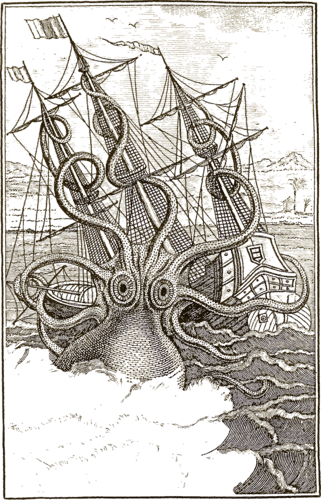kraken¶
kraken is a turn-key OCR system optimized for historical and non-Latin script material.
Features¶
kraken’s main features are:
Fully trainable layout analysis and character recognition
Right-to-Left, BiDi, and Top-to-Bottom script support
ALTO, PageXML, abbyyXML, and hOCR output
Word bounding boxes and character cuts
Multi-script recognition support
Public repository of model files
Pull requests and code contributions are always welcome.
Installation¶
Kraken can be run on Linux or Mac OS X (both x64 and ARM). Installation through the on-board pip utility and the anaconda scientific computing python are supported.
Installation using Pip¶
$ pip install kraken
or by running pip in the git repository:
$ pip install .
If you want direct PDF and multi-image TIFF/JPEG2000 support it is necessary to install the pdf extras package for PyPi:
$ pip install kraken[pdf]
or
$ pip install .[pdf]
respectively.
Installation using Conda¶
To install the stable version through conda:
$ conda install -c conda-forge -c mittagessen kraken
Again PDF/multi-page TIFF/JPEG2000 support requires some additional dependencies:
$ conda install -c conda-forge pyvips
The git repository contains some environment files that aid in setting up the latest development version:
$ git clone https://github.com/mittagessen/kraken.git
$ cd kraken
$ conda env create -f environment.yml
or:
$ git clone https://github.com/mittagessen/kraken.git
$ cd kraken
$ conda env create -f environment_cuda.yml
for CUDA acceleration with the appropriate hardware.
Finding Recognition Models¶
Finally you’ll have to scrounge up a recognition model to do the actual recognition of characters. To download the default English text recognition model and place it in the user’s kraken directory:
$ kraken get 10.5281/zenodo.2577813
A list of libre models available in the central repository can be retrieved by running:
$ kraken list
Model metadata can be extracted using:
$ kraken show 10.5281/zenodo.2577813
name: 10.5281/zenodo.2577813
A generalized model for English printed text
This model has been trained on a large corpus of modern printed English text\naugmented with ~10000 lines of historical p
scripts: Latn
alphabet: !"#$%&'()+,-./0123456789:;<=>?@ABCDEFGHIJKLMNOPQRSTUVWXYZ[]`abcdefghijklmnopqrstuvwxyz{} SPACE
accuracy: 99.95%
license: Apache-2.0
author(s): Kiessling, Benjamin
date: 2019-02-26
Quickstart¶
The structure of an OCR software consists of multiple steps, primarily preprocessing, segmentation, and recognition, each of which takes the output of the previous step and sometimes additional files such as models and templates that define how a particular transformation is to be performed.
In kraken these are separated into different subcommands that can be chained or ran separately:
Recognizing text on an image using the default parameters including the prerequisite step of page segmentation:
$ kraken -i image.tif image.txt segment -bl ocr
Loading RNN ✓
Processing ⣻
To segment an image into reading-order sorted baselines and regions:
$ kraken -i bw.tif lines.json segment -bl
To OCR an image using the default model:
$ kraken -i bw.tif image.txt segment -bl ocr
To OCR an image using the default model and serialize the output using the ALTO template:
$ kraken -a -i bw.tif image.txt segment -bl ocr
All commands and their parameters are documented, just add the standard
--help flag for further information.
Training Tutorial¶
There is a training tutorial at Training kraken.
License¶
Kraken is provided under the terms and conditions of the Apache 2.0
License.
Funding¶
kraken is developed at the École Pratique des Hautes Études, Université PSL.
This project was partially funded through the RESILIENCE project, funded from the European Union’s Horizon 2020 Framework Programme for Research and Innovation.


